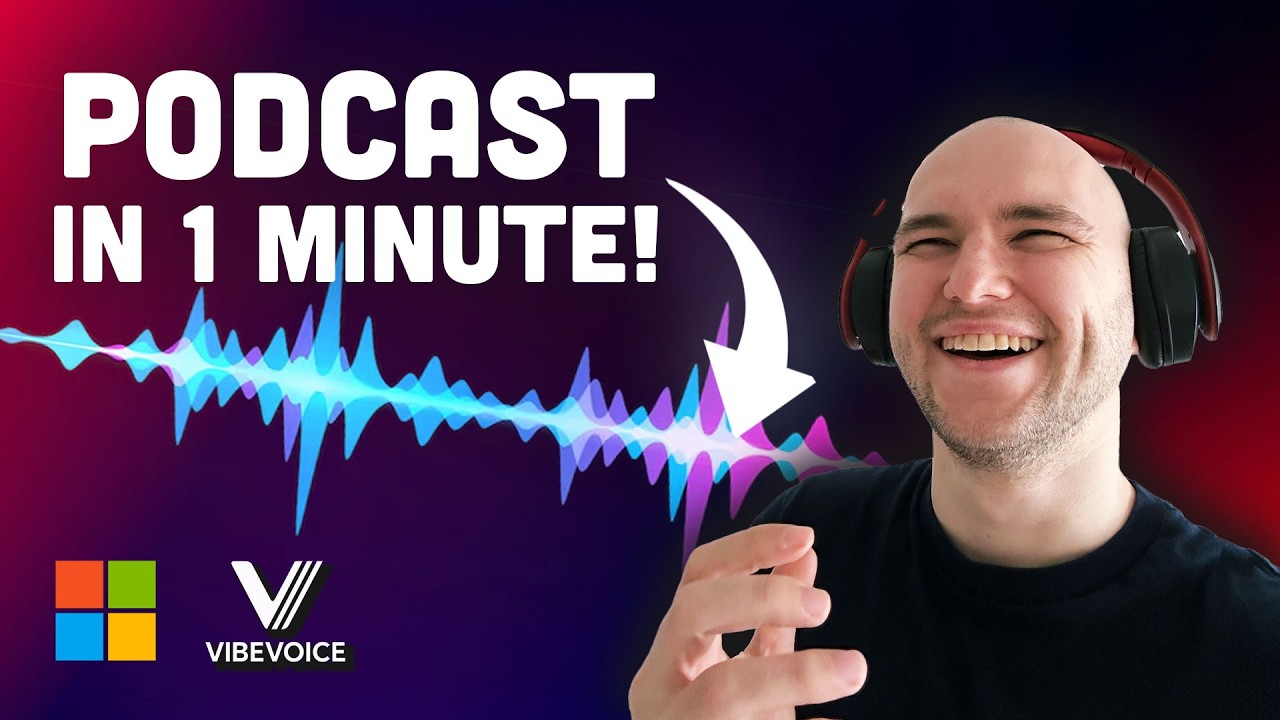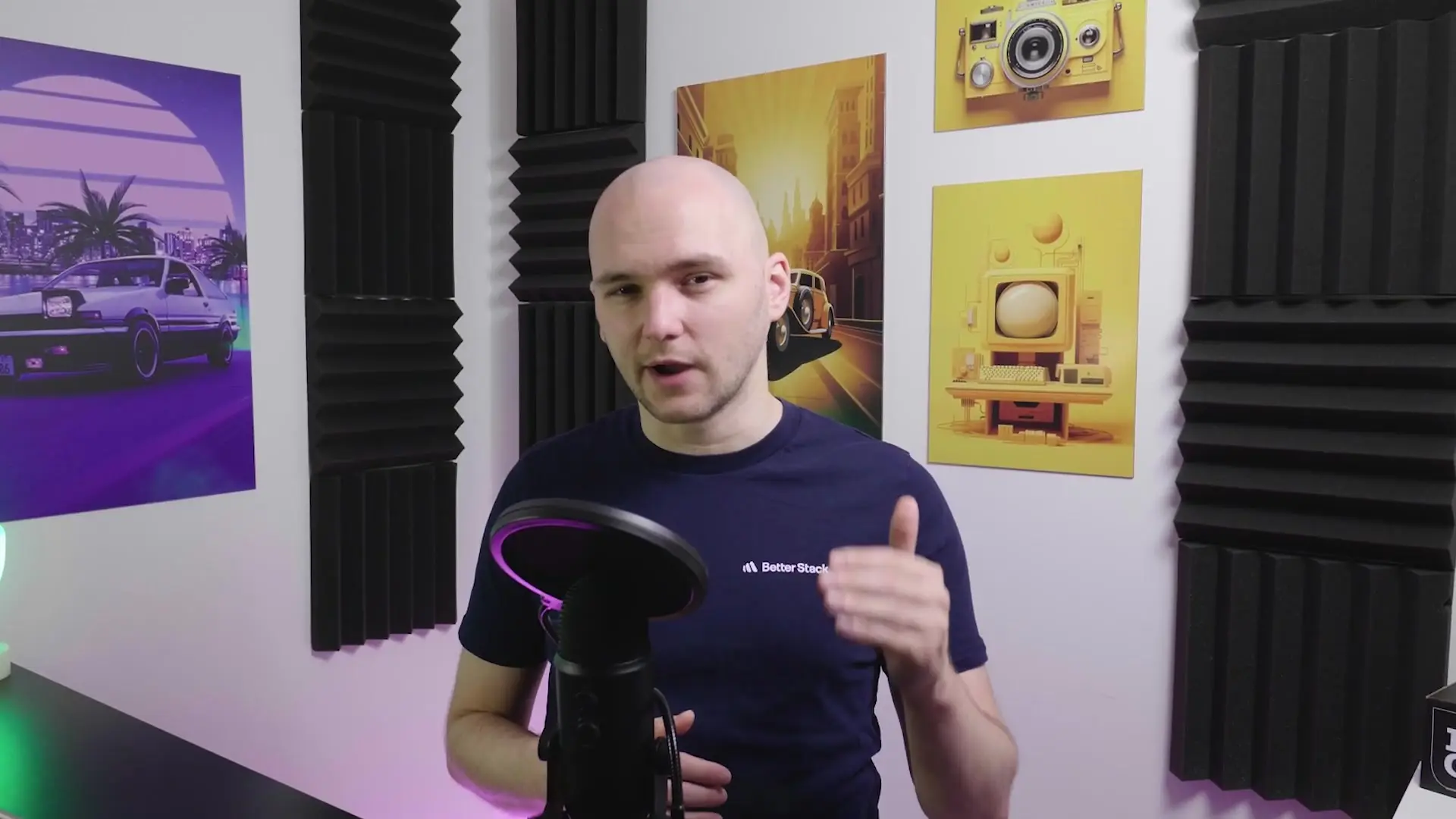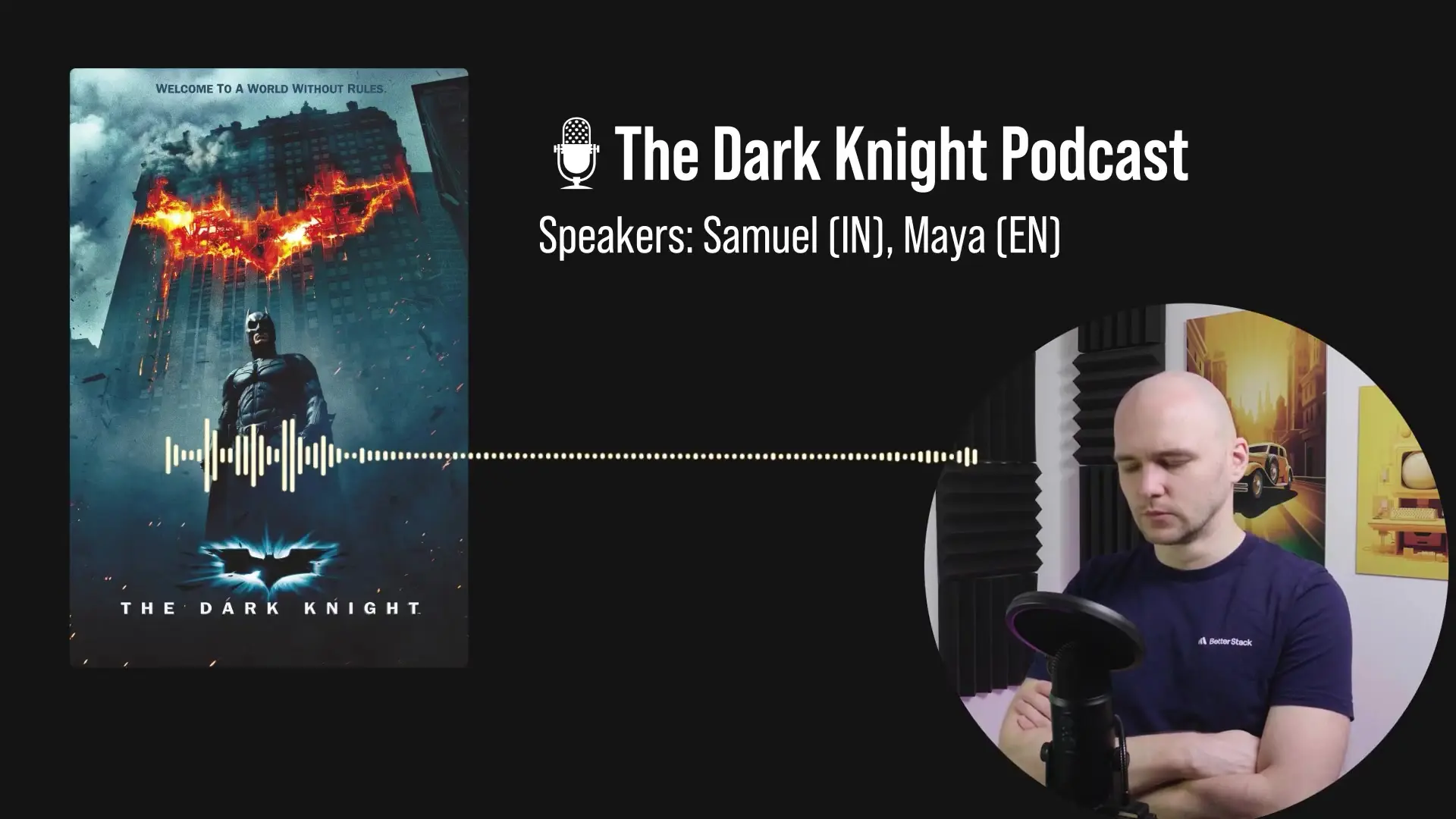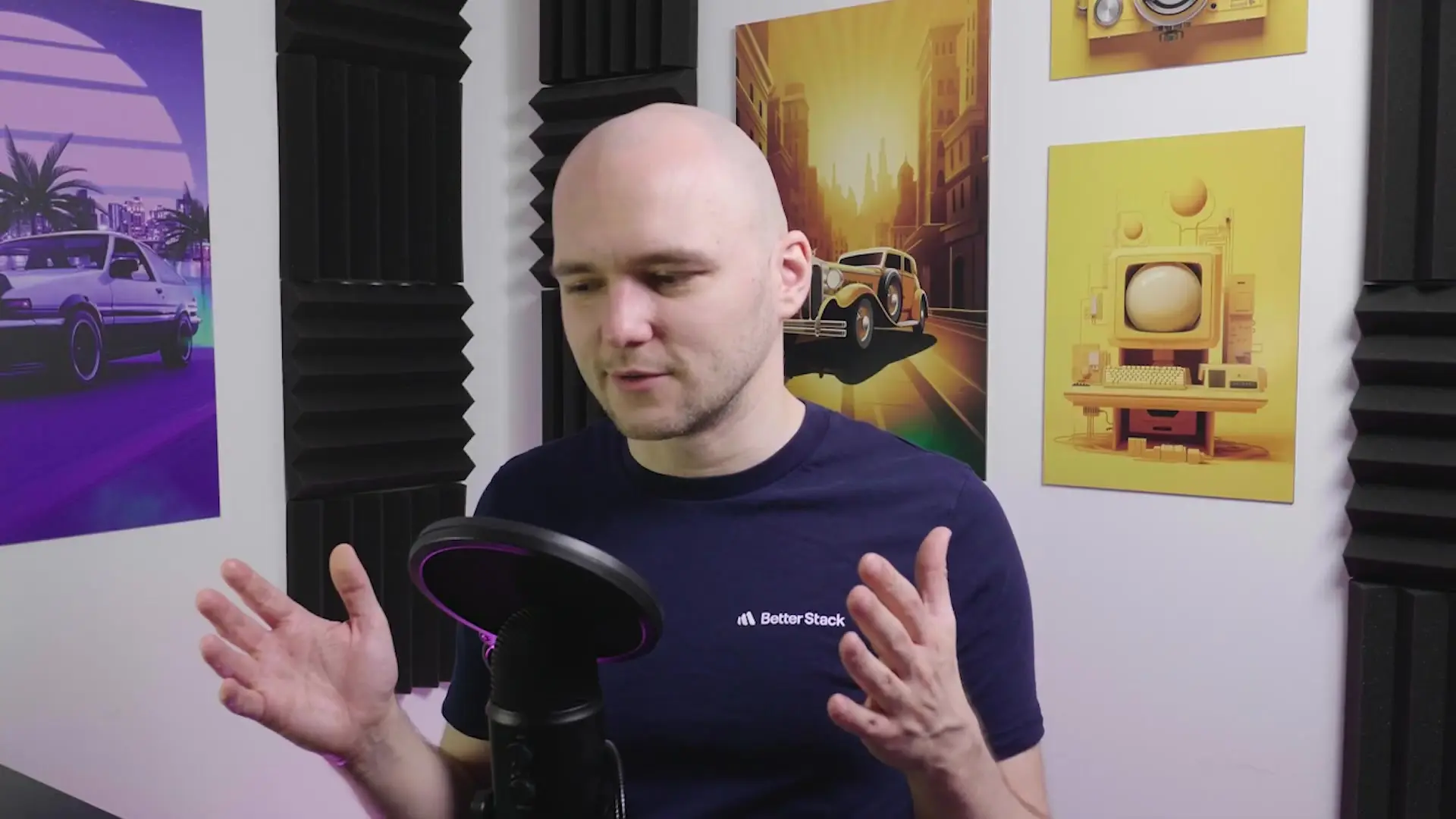
Microsoft has released Vibevoice, an innovative open-source text-to-speech model that's pushing the boundaries of AI-generated audio. This powerful tool can create up to 90 minutes of audio featuring up to four distinct speakers with consistent voices and natural conversational flow. The technology opens exciting possibilities for content creators, developers, and anyone interested in generating podcast-like audio content without traditional recording equipment or voice talent.
What Makes Vibevoice Different?
Unlike conventional text-to-speech systems, Vibevoice employs a technique called "next token diffusion." Rather than using standard autoregressive stacks to predict audio codes, it utilizes a Language Learning Model (LLM) to process scripts and speaker prompts. This is paired with a lightweight diffusion head that predicts acoustic latent tokens sequentially, maintaining dialogue coherence while adding fine acoustic details.
The model employs two ultra-low-rate continuous tokenizers—one acoustic and one semantic—both operating at approximately 7.5 hertz. This represents a roughly 3,200x downsampling from 24 kHz audio, significantly reducing the number of tokens that need to be modeled. According to Microsoft, this provides about 80 times better compression compared to earlier models, with a speech-to-text ratio of roughly two speech tokens to one byte-pair encoding (BPE) text token.

Available Model Versions and Features
Currently, Vibevoice is available in two versions: a standard model that can generate up to 90 minutes of audio, and a larger model with a 45-minute limit per run. Microsoft has also mentioned plans for a streaming variant to accommodate users with modest hardware. At present, the model supports two languages: English and Chinese.
What truly sets Vibevoice apart are its spontaneous features that activate based on context:
- Spontaneous emotional expression that varies based on dialogue content
- Ability to sing when prompted within the conversation
- Occasional AI-generated background music that complements the content
- Natural turn-taking between multiple speakers
Interestingly, these features aren't directly controllable by the user—the model decides when to implement them based on contextual cues in the script.
Creating a Movie Trivia Podcast with Vibevoice
To demonstrate Vibevoice's capabilities, we can create a simple movie trivia podcast featuring two AI speakers. This project allows users to input any movie title, and the system will automatically generate a podcast episode where the AI speakers discuss interesting trivia about that film.
The implementation process involves several steps:
- Setting up a virtual environment and installing dependencies
- Configuring API keys for OpenAI (to generate speaker scripts) and The Movie Database (to fetch movie information)
- Fetching movie data and trivia from external sources
- Generating a conversational script between two AI speakers
- Using Vibevoice to convert the script into an audio podcast
- Previewing and downloading the generated audio file
The project works by first retrieving movie information from The Movie Database API, then querying Wikipedia for facts and trivia about the selected film. This information is then used to generate a conversational script between two speakers using OpenAI's API. Finally, Vibevoice processes this script to create a natural-sounding podcast episode.
Sample Output and Voice Characteristics
Vibevoice offers nine sample voices with different characteristics and accents. When testing with films like "The Godfather" and "The Dark Knight," the generated podcasts demonstrated several interesting features of the model.

In one example, when prompted to sing about "The Godfather," the AI speaker hesitated briefly before breaking into a short melodic phrase: "In the shadows, the family stands strong." In another instance with "The Dark Knight," the model produced a more haunting musical segment when discussing the film's score by Hans Zimmer and James Newton Howard.
The emotional expressions are particularly noteworthy, with voices naturally conveying excitement, surprise, or contemplation depending on the content. However, some outputs can be unpredictable—voices occasionally change mid-conversation, and the spontaneous singing segments sometimes produce strange or jarring results.

Potential Applications for Vibevoice
While Vibevoice is still in its early stages, there are several promising applications for this technology:
- Free alternative to commercial text-to-speech services
- Real-time voice assistants, particularly if the smaller 0.5 billion parameter model becomes available
- IoT device interfaces with natural-sounding voices
- Educational content creation for different learning styles
- Accessibility tools for written content
- Rapid prototyping of podcast concepts before investing in production
Technical Requirements and Setup
To run Vibevoice effectively, you'll need a CUDA-supported GPU. For those without suitable hardware, cloud-based solutions like RunPod with an A40 GPU provide a viable alternative. The installation process involves setting up a virtual environment, installing dependencies, and configuring necessary API keys.
# Clone the repository
git clone https://github.com/your-repo/vibevoice-podcast-generator.git
cd vibevoice-podcast-generator
# Create and activate virtual environment
python -m venv venv
source venv/bin/activate
# Install dependencies
bash install.sh
# Create environment file with API keys
echo "OPENAI_API_KEY=your_openai_key_here
TMDB_API_KEY=your_tmdb_key_here" > .env
# Run the interactive script
python -m mainWhen running the script, you'll be prompted to enter a movie title and optionally specify the release year. The system will then fetch relevant information, generate a script, and allow you to select from the available voice options before creating the final audio file.
Limitations and Future Improvements
While Vibevoice represents an impressive advancement in text-to-speech technology, it does have some limitations. The spontaneous features, while innovative, can sometimes produce unpredictable or strange outputs. Voice consistency isn't always maintained throughout longer conversations, and the AI-generated background music can occasionally sound disjointed or inappropriate for the content.
Microsoft's development roadmap suggests future improvements may include:
- A smaller 0.5 billion parameter model for real-time applications
- Streaming capabilities for more efficient processing
- Support for additional languages beyond English and Chinese
- Greater control over spontaneous features like singing and emotional expression
- Improved voice consistency throughout longer audio segments
Conclusion
Microsoft's Vibevoice represents a significant step forward in open-source text-to-speech technology. While it may not yet match the polish of commercial alternatives, its ability to generate long-form conversational audio with multiple speakers, emotional expressions, and even singing capabilities makes it a fascinating tool for developers and content creators.
The technology demonstrates how rapidly AI-generated audio is evolving, with increasingly natural-sounding voices and conversational patterns. As the model continues to develop and more control is added over its spontaneous features, Vibevoice could become an invaluable resource for podcast creation, voice assistants, and other audio applications requiring natural human-like speech.
Let's Watch!
Microsoft's VibevoiceAI Creates Full Podcasts in Minutes
Ready to enhance your neural network?
Access our quantum knowledge cores and upgrade your programming abilities.
Initialize Training Sequence